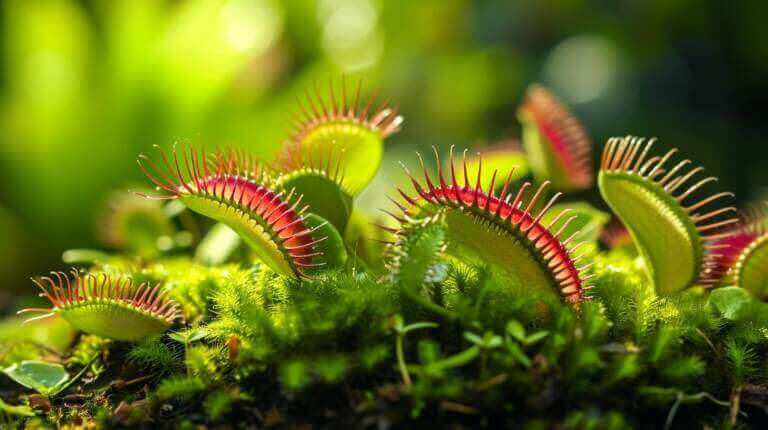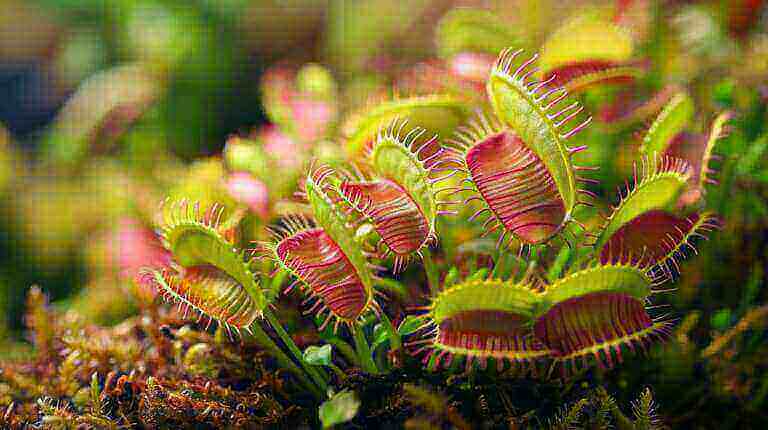How to Prune and Shape Dumb Cane or Dieffenbachia Plant for Optimal Growth
Dieffenbachia is a popular and easy-to-grow indoor foliage plant. However, over time, it can become leggy and develop unruly top growth. Pruning and shaping the plant is necessary to maintain its form and promote bushier growth. In this article, I will provide step-by-step instructions on how to prune and shape dieffenbachia houseplants, along with essential care tips.
Key Takeaways:
- Regular pruning helps maintain the health and aesthetics of dieffenbachia houseplants.
- Pruning stimulates new growth and promotes bushier plants.
- Wear gloves when pruning dieffenbachia to protect against the sap, which can cause skin irritation.
- Dieffenbachia can be pruned at any time of the year.
- Propagation of dieffenbachia can be done using stem cuttings from pruning.
Benefits of Pruning and Shaping Dieffenbachia Plant
Pruning and shaping your Dumb Cane plant, also known as Dieffenbachia, can have numerous benefits for its growth and overall health. Here are some reasons why pruning is essential:
Promotes Optimal Growth
When you prune your Dumb Cane plant, you stimulate new growth and encourage the development of fresh, vigorous shoots. By cutting back old and leggy stems, you allow the plant to redirect energy towards new growth, leading to a fuller and healthier appearance. Regular pruning also helps maintain the overall shape and height of the plant, preventing it from becoming unruly or out of control.
Dieffenbachias can be fast-growing plants, and without proper pruning, they may quickly outgrow their intended space. By trimming and shaping your Dumb Cane regularly, you can keep it at the desired size and prevent it from overpowering other plants nearby.
Improves Plant Health
Pruning your Dumb Cane plant not only helps with its appearance but also promotes overall plant health. By removing dead or damaged leaves, you eliminate potential breeding grounds for pests and diseases. This allows the plant to allocate its resources more efficiently towards healthy growth, enhancing its resilience against common plant ailments.
Additionally, pruning helps improve air circulation around the plant, reducing the risk of fungal infections and leaf-related issues. Proper airflow encourages healthy transpiration and helps prevent waterlogged soil, which can lead to root rot. Ultimately, regular pruning ensures that your Dumb Cane remains in optimal condition and can thrive in its environment.
Shapes the Plant
Pruning your Dieffenbachia gives you the opportunity to shape the plant according to your preferences. By selectively removing specific branches or stems, you can guide its growth towards a more attractive and aesthetically pleasing form. Whether you want a bushy and compact appearance or a taller and more tree-like shape, pruning allows you to have control over the plant’s structure.
Shaping your Dumb Cane can also help prevent it from becoming top-heavy, which could make it susceptible to tipping over or breaking. By maintaining a well-balanced and evenly distributed foliage, you ensure the plant’s stability and reduce the risk of damage.
Tools and Materials Required To Prune Dumb Cane Plant
Pruning shears:
To properly prune your Dumb Cane plant, you will need a pair of sharp and clean pruning shears. These shears will allow you to make clean cuts without damaging the plant’s stems or branches. It is important to regularly clean and sanitize your pruning shears to prevent the spread of any potential diseases or pests.
Gloves and protective gear:
When handling and pruning your Dumb Cane plant, it is advisable to wear gloves and other protective gear. This will help protect your hands from any potential irritation or allergic reactions that may arise from the plant’s sap or thorns. Gloves also provide an extra layer of protection in case you accidentally come into contact with any sharp or prickly parts of the plant.
Once you have gathered the necessary tools and materials, you can proceed with pruning and shaping your Dumb Cane plant for optimal growth.
Inspect the Plant:
Start by carefully inspecting your Dumb Cane plant for any shriveled, brown, yellow, or damaged leaves. Using your pruning shears, trim these leaves off at the base of their stems. This will not only enhance the plant’s appearance but also prevent the spread of any pests or diseases.
Remove Leggy Stems:
If your Dumb Cane plant has grown tall and leggy with an exposed stem, consider removing the top few inches. This will encourage the plant to produce new shoots and become fuller. Cut at an angle, just above a leaf node or set of leaves. Make sure to clean your pruning shears between cuts to avoid any potential contamination.
Shape the Plant:
Pruning also gives you the opportunity to shape your Dumb Cane plant according to your preferences. If you desire a bushy appearance, prune back the longer stems to promote branching. Alternatively, if you prefer a taller and more tree-like shape, allow the plant to grow without pruning the main stem.
Maintain Regular Pruning:
To ensure optimal growth and appearance, it is recommended to regularly prune your Dumb Cane plant. This will help control its size and shape, prevent it from becoming unruly, and maintain a well-balanced and visually pleasing form. Aim to prune every few months or as needed to keep your plant in optimal health.
Step-by-Step Guide to Prune Dieffenbachia
Assessing the Plant
Before you start pruning and shaping your Dieffenbachia plant, take the time to assess its overall condition and shape. Look for any leggy stems, shriveled or damaged leaves, or areas that may need reshaping. This assessment will help guide your pruning decisions and ensure that you achieve the desired results.
Removing Dead or Damaged Leaves
Using a pair of clean and sharp pruning shears, carefully trim away any dead, yellowed, or damaged leaves from the base of their stems. This will not only improve the plant’s appearance but also prevent the spread of pests or diseases. Make sure to cut as close to the base as possible without damaging any healthy parts of the plant.
Pruning Leggy Stems
If your Dieffenbachia plant has grown tall and leggy, with a bare stem at the bottom, consider pruning back the top few inches. This will encourage new growth and make the plant appear fuller and bushier. Use your pruning shears to make a clean cut at an angle, just above a leaf node or set of leaves. The new growth will emerge from the node just below the cut.
Shaping the Plant
Pruning also gives you the opportunity to shape your Dieffenbachia plant according to your preferences. If you want a bushier appearance, prune back the longer stems to promote branching. This will result in a fuller and more compact plant. On the other hand, if you prefer a taller and more tree-like shape, allow the main stem to grow without pruning. Be mindful of the plant’s natural growth pattern and adjust your pruning accordingly.
Maintaining Regular Pruning
To keep your Dieffenbachia plant in its best shape, it is important to maintain regular pruning. This will help control its size and shape, prevent it from becoming unruly, and maintain a visually pleasing form. Aim to prune every few months or as needed, depending on the growth rate of your plant. Regular pruning will promote new growth, rejuvenate the plant, and keep it healthy.
By following these step-by-step pruning and shaping techniques, you can encourage optimal growth and maintain the overall health and appearance of your Dieffenbachia plant. Remember to always use clean and sharp pruning shears, assess the plant’s condition before pruning, and regularly maintain the shape through pruning. With proper care, your Dieffenbachia plant will thrive and bring greenery and beauty [9][10][11][12]
Prune Your Dieffenbachia for Height Control
One of the main reasons to prune a Dumb Cane plant, or Dieffenbachia plant, is to control its height. These plants can grow quite tall, and if left unpruned, they can become unruly and take up too much space. By trimming the main stem, you can control the height and promote a more compact and visually appealing plant.
Trimming the main stem
To prune the main stem of a Dumb Cane plant, start by assessing the overall condition of the plant and determining how much height reduction you desire. Use a pair of clean and sharp pruning shears to make a clean cut just above a leaf node or set of leaves. This will encourage new growth to emerge from the node just below the cut, resulting in a bushier and more controlled plant.
Encouraging bushier growth
Pruning is not only beneficial for height control but also for encouraging bushier growth. If you prefer a fuller and more compact plant, you can trim back the longer stems to promote branching. By selectively pruning the stems, you can stimulate the growth of new shoots and create a denser foliage. Be mindful of the plant’s natural growth pattern and adjust your pruning accordingly to maintain a balanced and visually pleasing shape.
Regular pruning is essential to maintain the desired height and shape of your Dumb Cane plant. Aim to prune every few months or as needed, depending on the growth rate of your plant. As you trim back the stems, fresh and vigorous new shoots will soon emerge, contributing to the overall health and appearance of the plant.
Remember to always use clean and sharp pruning tools to prevent the spread of pests or diseases. Assess the plant’s condition before pruning and remove any dead or damaged leaves to improve its appearance and prevent further issues. By following these pruning techniques, you can promote optimal growth, maintain control over the height, and shape your Dumb Cane plant to your preferences.
Prune Your Dumb Cane for Shape and Aesthetics
Pruning a Dumb Cane plant, or Dieffenbachia plant, not only promotes healthy growth but also allows you to control its shape and create a visually appealing form. Here are some key points to consider when pruning and shaping your Dumb Cane plant for optimal growth.
Removing leggy branches
Over time, some branches of the Dumb Cane plant may become leggy or elongated, which can disrupt its overall form and appearance. To maintain a balanced and compact shape, it is important to identify these leggy branches and prune them back. Use clean and sharp pruning shears to make a clean cut just above a leaf node or set of leaves. This will encourage new growth to emerge from the node below and result in a fuller, more attractive plant.
Creating a balanced form
When pruning your Dumb Cane plant, aim for a balanced form by selectively trimming back branches that are growing unevenly. Look for branches that are longer or protruding in one direction and carefully prune them to maintain a symmetrical shape. By creating a balanced form, your Dumb Cane plant will appear more aesthetically pleasing and well-maintained.
Encouraging branching
To achieve a bushier and more lush appearance, you can strategically prune your Dumb Cane plant to encourage branching. Focus on trimming back longer stems, particularly those that have fewer leaves or are growing in a sparse manner. By doing so, you will stimulate the growth of new shoots and encourage the plant to fill out with dense foliage.
Regular maintenance pruning
It is important to regularly prune your Dumb Cane plant to maintain its preferred height and shape. Depending on the growth rate, aim to prune every few months or as needed. By consistently cutting back any excessive growth, you can prevent the plant from becoming unruly and taking up too much space in your indoor environment.
Remember to always use clean and sharp pruning tools to prevent the spread of pests or diseases. Before pruning, assess the overall condition of your Dumb Cane plant and remove any dead or damaged leaves to improve its appearance and prevent further issues.
By following these pruning techniques and maintaining a regular pruning schedule, you can shape and maintain a healthy and visually appealing Dumb Cane plant. With proper care and attention, your Dumb Cane plant will thrive, adding beauty and vibrancy to your
FAQ
How often should I water my dieffenbachia?
The watering schedule for your dieffenbachia can depend on its growing conditions. Generally, it’s time to water when the top inch of soil feels dry. However, overwatering can harm the plant, so it’s important to ensure that the plant isn’t sitting in water.
How does a dieffenbachia grow?
A dieffenbachia grows by producing new leaves from the top of the cane. During the growing season, you may see rapid growth, especially if the plant is given plant food regularly.
How do I prune a dieffenbachia?
When you’re pruning your dieffenbachia, make sure to remove any brown leaves or leaf tips. This not only helps the plant look its best, but also promotes more growth.
How do I propagate my dieffenbachia?
To propagate dieffenbachia, cut a piece of the cane and place the plant cutting in water. Once roots have formed, you can plant it in soil to create a new plant.
What types of dieffenbachia are there?
There are many dieffenbachia varieties, each with its own unique leaf pattern. Some popular types include dieffenbachia ‘Camille’, ‘Tropic Snow’, and ‘Compacta’.







